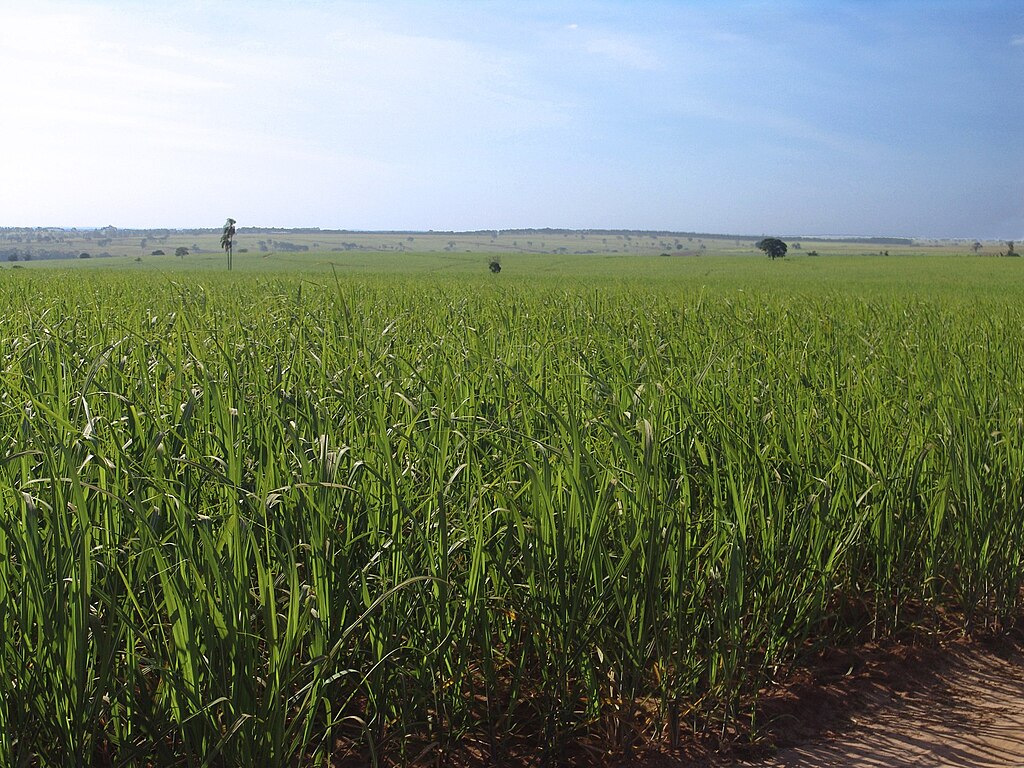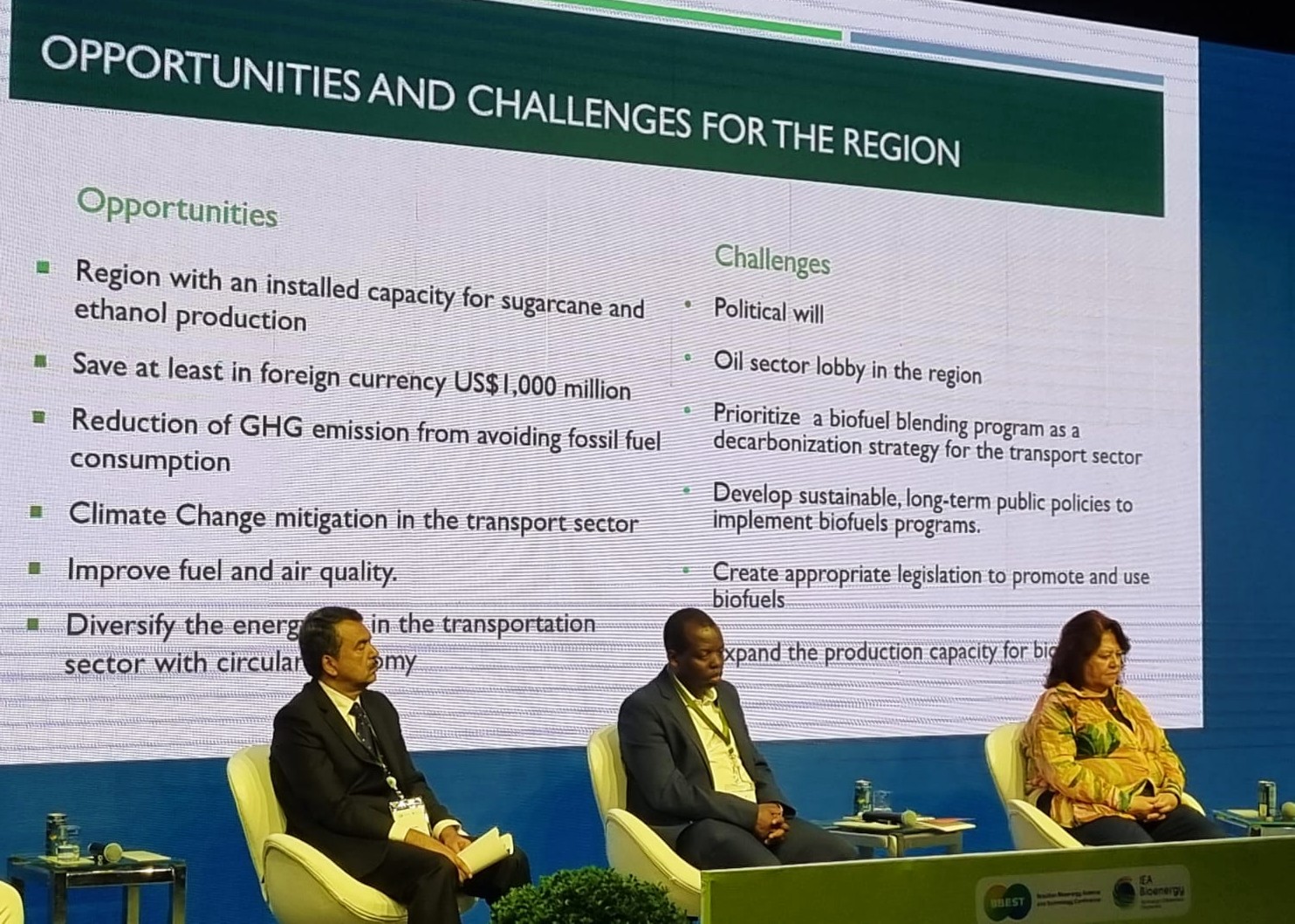

The report was launched during the Brazilian Bioenergy Science and Technology Conference (photo: José Reynaldo da Fonseca/Wikimedia Commons)
The use of biofuels in Brazil and other developing countries can avoid some 400 million metric tons of greenhouse gas emissions from the transportation sector by 2030, according to a report produced by an International Energy Agency task force led by researchers affiliated with the FAPESP Bioenergy Research Program.
The use of biofuels in Brazil and other developing countries can avoid some 400 million metric tons of greenhouse gas emissions from the transportation sector by 2030, according to a report produced by an International Energy Agency task force led by researchers affiliated with the FAPESP Bioenergy Research Program.

The report was launched during the Brazilian Bioenergy Science and Technology Conference (photo: José Reynaldo da Fonseca/Wikimedia Commons)
By Elton Alisson | Agência FAPESP – The use of biofuels in transportation in Brazil and ten other emerging countries including China, India and South Africa can avoid CO2 emissions totaling 300 million-400 million metric tons by 2030, contributing around half the target set by the International Energy Agency (IEA) to reduce global emissions of this greenhouse gas (GHG) by 800 million tons by the transportation sector in the next six years.
This is one of the main conclusions of a report on the extent to which biofuels can potentially reduce GHG emissions in the transportation sector in Africa and Asia, produced by an IEA Bioenergy task force led by researchers affiliated with the FAPESP Bioenergy Research Program (BIOEN).
The report was launched during the Brazilian Bioenergy Science and Technology Conference (BBEST 2024), which took place on October 22-24 in São Paulo.
“The emerging countries can reduce the carbon footprint of their transportation sectors by as much as 84% if they replace fossil fuels with renewables such as ethanol and biodiesel, using very little land,” said Glaucia Mendes Souza, coordinator of BIOEN and lead author of the report.
An earlier report by the researchers, published in 2023, discussed the potential market for biofuels in Latin American countries, including Argentina, Brazil, Colombia and Guatemala. These four countries, with Brazil in the lead, account for 30% of global biofuel production, reducing GHG emissions by 62 million tons of CO2 equivalent per year.
The researchers also found that the amount of land available to grow energy crops in the four countries is more than sufficient to support the expansion of biofuel production without competing with food crops or requiring deforestation.
“The region has a great deal of available land, especially pastureland that could be used to expand bioenergy in these countries,” Souza said.
“If they want to double biofuel production and thereby avoid GHG emissions amounting to 120 million tons of CO2 equivalent per year, these countries will only have to convert 5% of their pastureland.”
According to the report, China, Ethiopia, India, Malaysia, South Africa and Thailand also have plenty of available land on which to replicate the bioenergy production model implemented in Latin America.
These emerging countries are all experiencing fast social and economic development, and their contributions to global GHG emissions are expected to increase rapidly. If per capita CO2 emissions from their transportation sectors are comparable to those of the members of the Organization for Economic Cooperation and Development (OECD), global emissions from the sector will more than double, rising 102%. Biofuel production could significantly reduce these countries’ CO2 emissions while using a relatively small amount of land, according to the report.
“Global production of biofuels amounts to about 160 billion liters or 4% of the transportation sector’s demand. The IEA’s projections suggest this will have to be tripled in the next five to seven years, and emerging countries, especially in the Global South, will play a key role in this growth,” said Bharadwaj Kummamuru, Executive Director of the World Bioenergy Association (WBA), which is headquartered in Sweden.
These countries will face many challenges in scaling up biofuel production, especially in financing, technology development, and policymaking. “Most of these emerging countries are importers of fossil fuels and depend on imported oil. In addition, their populations are still growing strongly, so that they will need more energy even as they pursue decarbonization and net zero emissions,” Kummamuru stressed.

Thomas Jossy (United Nations Industrial Development Organization – UNIDO); Unity Chipfupa (University of South Africa – UNISA); Rocio Diaz-Chavez (Imperial College London, UK) (photo. Elton Alisson/Agência FAPESP)
Potential reduction in emissions
The report also concludes that biofuels are economically viable in the countries studied, except China and Malaysia. In China, competition with food makes the raw material too expensive. However, biofuels could be imported in this case. In Malaysia, fossil fuels are subsidized to control inflation, and this policy could be extended to biofuels in order to make them economically competitive.
“Southeast Asia and Brazil have a great deal in common. We have developing countries, diverse resources, and the same goal of prioritizing the development of a local biofuel industry to replace imported fuel. We’re considering the same approach as Brazil,” said Esther Swee Yoong Lew, representing Malaysia’s Energy Transition and Water Transformation Ministry.
According to the report, lifecycle assessments show that substantial reductions in GHG emissions can be achieved for biofuels produced in Africa and Asia – up to 78% for biodiesel and 81% for ethanol compared to conventional fuels. These values are similar to those previously reported for biofuels produced in Latin America (up to 79% for ethanol and 84% for biodiesel).
The potential reduction in GHG emissions is particularly significant in India, Indonesia and South Africa, the report finds. In India, biofuels can be produced with low carbon intensity. In Indonesia, alongside the low carbon intensity of biofuels, fossil diesel has a high sulfur content, which causes acid rain. In South Africa, although emissions from biofuel production are above average, the reduction is still substantial compared with synthetic fossil fuels.
The report “Biofuels in emerging markets of Africa and Asia: an overview of costs and greenhouse gas savings” is at: www.ieabioenergy.com/blog/publications/biofuels-in-emerging-markets-of-africa-and-asia-an-overview-of-costs-and-greenhouse-gas-savings/.
Republish
The Agency FAPESP licenses news via Creative Commons (CC-BY-NC-ND) so that they can be republished free of charge and in a simple way by other digital or printed vehicles. Agência FAPESP must be credited as the source of the content being republished and the name of the reporter (if any) must be attributed. Using the HMTL button below allows compliance with these rules, detailed in Digital Republishing Policy FAPESP.





